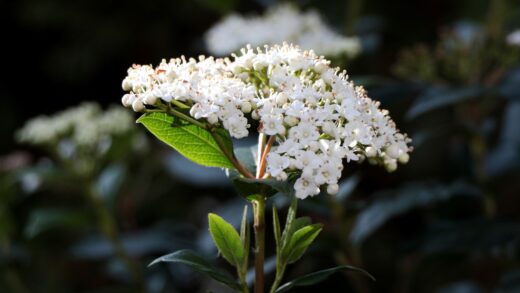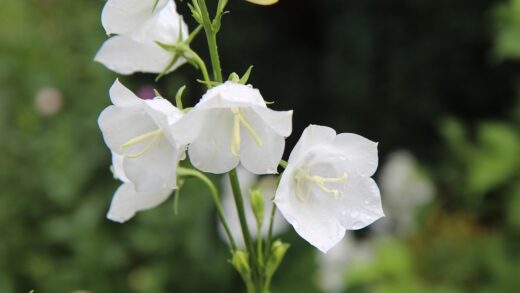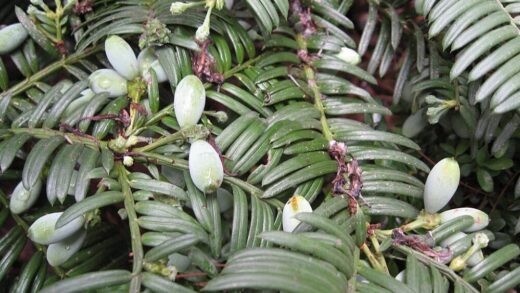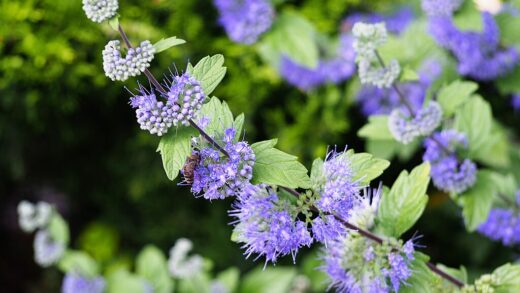The successful cultivation of garlic begins with a deep understanding of its planting and propagation, a process that is both an art and a science. Unlike many other vegetables that are grown from seed, garlic is typically propagated vegetatively from individual cloves, each one a genetic clone of the parent bulb. This method ensures consistency in flavour, size, and growth habits, making the selection of high-quality planting stock the first critical decision a grower must make. The timing of planting is equally crucial, as it dictates the length of the growing season and directly impacts the final size of the harvested bulbs. A well-executed planting strategy lays the groundwork for a healthy crop and a plentiful harvest.
Choosing the right garlic to plant is a foundational step that cannot be overlooked. Garlic from the grocery store is often unsuitable for planting, as it may have been treated with growth inhibitors to prevent sprouting and could be a variety that is not well-adapted to your local climate. It is far better to source your seed garlic from a reputable seed company, a local farmers’ market, or a fellow gardener. These sources can provide specific varieties, such as hardneck or softneck types, that are known to perform well in your region and are certified to be disease-free, giving your crop the best possible start.
Once you have your seed garlic, the next step is to prepare the cloves for planting. This involves carefully “cracking” the bulb, which means separating it into its individual cloves a day or two before planting. It is important to handle the cloves gently to avoid bruising and to leave the protective papery wrapper on each clove intact. You should select only the largest, healthiest cloves for planting, as the size of the clove is directly correlated with the potential size of the bulb it will produce. Any small, misshapen, or damaged cloves can be set aside for culinary use.
The timing of planting is heavily dependent on your climate zone. In most regions with cold winters, garlic is planted in the autumn, typically four to six weeks before the ground freezes solid. This fall planting allows the cloves to establish a robust root system before going into dormancy for the winter, giving them a significant head start for vigorous growth once spring arrives. In warmer climates with mild winters, garlic can be planted in late autumn or even early winter. Regardless of the timing, the fundamental principles of proper clove selection and soil preparation remain the same.
Selecting varieties and seed stock
The world of garlic is surprisingly diverse, broadly divided into two main subspecies: hardneck (Allium sativum var. ophioscorodon) and softneck (Allium sativum var. sativum). Hardneck varieties are so-named for the rigid, woody flower stalk, or scape, that grows from the center of the bulb. They are generally more cold-hardy and are often considered to have more complex and robust flavours. Softneck varieties, on the other hand, do not produce a scape, which gives them a flexible stem that is ideal for braiding. They tend to have a longer storage life and a milder flavour compared to their hardneck cousins.
More articles on this topic
When selecting a variety, it is essential to consider your specific climate and growing conditions. Hardneck varieties, with their superior cold tolerance, are the preferred choice for gardeners in northern climates with harsh winters. They require a period of cold vernalization to properly form bulbs. Softneck varieties thrive in milder climates and are the type most commonly found in supermarkets due to their excellent storage qualities and adaptability to a wider range of conditions. Researching specific cultivars within these groups will reveal further nuances in flavour, clove size, and maturation time.
Sourcing high-quality seed stock is paramount to a successful harvest and is a critical step in preventing the introduction of disease into your garden. Always purchase your seed garlic from a reputable supplier that can guarantee their stock is free from common garlic pathogens like white rot and nematodes. While it may be tempting to use cloves from a grocery store bulb, this is a significant gamble. These bulbs are often treated to inhibit sprouting and may carry diseases that could persist in your soil for years, affecting future crops of the Allium family.
Upon receiving your seed garlic, a careful inspection is in order. The bulbs should be firm, plump, and free from any signs of mold, soft spots, or physical damage. A healthy bulb will feel heavy for its size and have tight, intact wrappers. Store the bulbs in a cool, dark, and well-ventilated place until you are ready to plant. Do not separate the cloves from the bulb until a day or two before planting, as this helps to keep them fresh and prevents them from drying out prematurely. This careful selection and handling of seed stock sets the stage for a healthy and productive crop.
Preparing the soil for planting
Thorough soil preparation is a non-negotiable prerequisite for growing large, healthy garlic bulbs. Garlic requires a loose, fertile, and well-draining soil to allow its roots to penetrate deeply and the bulb to expand without restriction. The process should begin several weeks before the planned planting date to allow the soil to settle and any amendments to begin integrating. The ideal location is one that receives at least six to eight hours of direct sunlight daily and has not been used to grow onions, leeks, or other alliums in the past three years to minimize the risk of soil-borne diseases.
More articles on this topic
The first step in preparing the bed is to improve its structure and fertility. Heavy clay soils must be amended to improve drainage and reduce compaction, while sandy soils need help retaining moisture and nutrients. The most effective way to improve any soil type is by incorporating a generous amount of organic matter. Spreading a three to four-inch layer of well-rotted compost, aged manure, or leaf mold over the planting area and working it into the top eight to twelve inches of soil will work wonders. This not only adds essential nutrients but also improves aeration and supports a healthy soil microbiome.
Next, it is important to ensure the soil has the proper nutrient balance for a heavy feeder like garlic. While compost provides a good baseline, a soil test can provide specific information on any deficiencies. Garlic benefits from a good supply of phosphorus for strong root development and potassium for overall plant health and bulb formation. A balanced, slow-release granular fertilizer can be incorporated into the soil during preparation to provide a steady supply of nutrients throughout the growing season. This pre-planting fertilization is crucial for fueling the initial growth spurt after the cloves sprout.
Finally, the soil should be worked to a fine tilth, creating a smooth and level planting surface. This involves breaking up any large clods of soil and removing any rocks, roots, or other debris that could impede bulb growth. Raking the surface smooth makes it easier to plant the cloves at a consistent depth and spacing. A well-prepared bed not only provides the optimal physical and nutritional environment for the garlic to thrive but also makes subsequent tasks like weeding and watering much more manageable throughout the growing season.
The planting process
The actual process of planting garlic is straightforward, but attention to detail in a few key areas can make a significant difference in the outcome. The first detail is the orientation of the clove. Each garlic clove has a distinct top and bottom: the top is the pointed end from which the shoot will emerge, and the bottom is the flat, basal plate where the roots will grow. It is absolutely essential to plant the clove with the pointed end up and the flat end down. Planting a clove upside down or sideways forces the emerging shoot to expend a great deal of energy reorienting itself, which can result in a smaller, misshapen bulb.
Depth and spacing are the next critical factors to consider. Garlic cloves should be planted approximately two to three inches deep, measured from the top of the clove to the soil surface. Planting too shallowly can expose the cloves to freezing and thawing cycles, which may heave them out of the ground, while planting too deeply can delay emergence and may hinder bulb development. Spacing between cloves should be between four to six inches within the row, with rows spaced about ten to twelve inches apart. This spacing provides ample room for each plant to develop a full-sized bulb and ensures good air circulation to reduce the risk of fungal diseases.
A practical method for achieving consistent spacing and depth is to create individual planting holes rather than a furrow. Using a dibber, a small trowel, or even your finger, you can make a hole for each clove at the desired depth. Place one clove in each hole, ensuring the correct orientation, and then gently backfill the hole with soil, lightly firming it down. This individual placement ensures each clove is perfectly situated. It is a more time-consuming method than planting in a furrow, but the precision it offers can lead to a more uniform and productive crop.
Once all the cloves are in the ground, the final step is to water the bed thoroughly. This initial watering helps to settle the soil around the cloves, eliminating any air pockets and providing the moisture needed to initiate root growth. After this first watering, a thick layer of mulch, such as straw or shredded leaves, should be applied over the entire bed. This mulch layer will help to protect the cloves from extreme winter temperatures, conserve soil moisture, suppress weed growth, and provide a slow release of organic matter as it decomposes. This completes the planting process and sets the stage for the garlic to begin its long journey toward harvest.
Propagation from bulbils and true seed
While the vast majority of garlic is propagated vegetatively from cloves, there are two other methods, though less common for the home gardener: propagation from bulbils and from true garlic seed. Bulbils are the small, pea-sized aerial cloves that form in the umbel, or flower head, at the top of the scape on hardneck garlic varieties. These are essentially miniature genetic clones of the parent plant. Propagating from bulbils is a method of producing a large quantity of disease-free planting stock, as bulbils are less likely to carry soil-borne pathogens than the underground cloves.
The process of growing garlic from bulbils is a lesson in patience. After the scape has fully formed and the umbel’s papery sheath has split open to reveal the cluster of bulbils, the entire scape can be harvested. The bulbils are then separated and can be planted in the autumn, much like regular cloves, though they are planted much more shallowly, only about an inch deep. In the first year, these bulbils will not produce a full, segmented bulb; instead, they will grow into a small, non-cloved bulb often referred to as a “round.” This round must then be harvested, cured, and replanted the following autumn to produce a fully developed, cloved bulb in the second year.
A far more complex and rare method of propagation is growing garlic from true seed. For centuries, it was believed that most garlic varieties were sterile and could not produce viable seeds. However, recent horticultural research has developed techniques to induce fertility and produce true garlic seed (TGS). This process is primarily used by breeders and researchers to develop new garlic varieties with novel traits, such as improved disease resistance or unique flavour profiles. Unlike vegetative propagation which produces clones, growing from seed allows for genetic recombination, creating a diverse population of offspring.
Growing garlic from TGS is a multi-year endeavour that requires significant expertise and controlled conditions. The seeds are typically started indoors in sterile soil mix under grow lights, much like other vegetable seeds. The resulting seedlings are delicate and grow slowly, producing a very small bulb in their first year. Similar to growing from bulbils, these small bulbs must be replanted for several consecutive seasons to gradually increase in size until they become a mature, harvestable bulb. For the average gardener, propagation from cloves remains the most practical and reliable method, but understanding these alternative techniques provides a deeper appreciation for the plant’s life cycle.


















